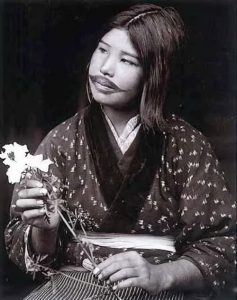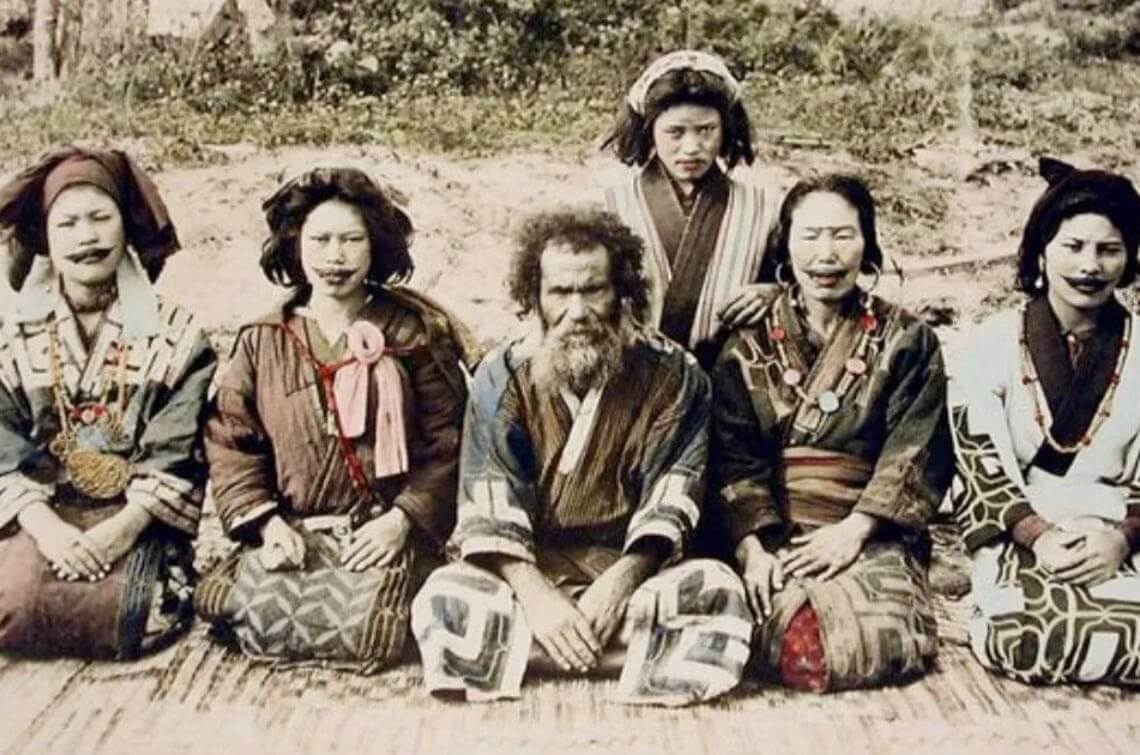Article index
Who are the Ainu and what is hidden behind their song?
Ainu (literally: men) is an ancient population that had settled thousands of years ago on the island of Hokkaido in northern Japan and even further north, towards the island of Sachalin and Kamchatka. The theories on their origins and their origin are largely wrapped in mystery.
 The Ainu lived on hunting, fishing and agriculture, practiced animist religion and adored all the divine forms which, according to the theories of this thought, lived in the elements of nature. Each divinity had a specific name and each of them for the Ainu was a spiritual entity from which they felt protected.
The Ainu lived on hunting, fishing and agriculture, practiced animist religion and adored all the divine forms which, according to the theories of this thought, lived in the elements of nature. Each divinity had a specific name and each of them for the Ainu was a spiritual entity from which they felt protected.
For example, the name of the greatest Japanese volcano, Fuji, derives from the word Fuchi, which in Ainu language is the spirit of fire and indicates the power of the heat of the earth, also called the primordial mother. In rituals the Ainu used to invoke this spirit before any action.
Great importance also had the spirit of the bear, considered a bridge between the human and divine world. Yiomante was called the most significant ceremony in the tradition of this people and consisted in a complex ritual that culminated in the sending of the soul of the bear to the upper world.
The initiation rite of young males Ainu included a ceremony during which the boys dressed the traditional dress. Then they began to grow hair, beard and mustache that represented wisdom and virility. In general, Ainu men were particularly hairy and long mustache often were supported by special sticks during the meal.
The Ainu woman and the reason for that tattoo
For women, tradition wanted to be practiced by their grandmothers or maternal aunts at the age of seven years (Nuye, which means to sculpt themselves) at the corners of the lips with pointed oxidian razors and was spread of coal in wounds, While the tattoo artist sang a Yukar, a form of epic poem, which said: “Even without it she is so beautiful. The tattoo around the lips as it is brilliant. You can only admire. "
This painful practice had sacred origins and continued over time. During the woman's life, new lines were added and the final result was a sort of Joker style "smile" that had the purpose of making women more similar to men and therefore stronger.
Furthermore, it was thought that the suffering caused by this practice templed women and prepared them for the pains of childbirth.
 The tattoo also had the aim of preventing evil spirits from taking their souls through the lips and served to protect against bad luck and disease.
The tattoo also had the aim of preventing evil spirits from taking their souls through the lips and served to protect against bad luck and disease.
This type of tattoo was also considered fundamental to be able to contract marriage and to ensure the continuation of life after death.
In addition to the one on the lips, women had other tattoos on their arms, which also had the function of guaranteeing protection from the spirits of evil.
Today this practice no longer exists and Ainu women tinge their blue lips and draw that "smile" similar to a couple of mustache only in special anniversaries.
Like many other indigenous and aboriginal populations, the Ainu were also discriminated against and persecuted for their culture, their language and their religion.
Only recently did the Japanese state officially recognized the identity of this people, eliminating any persecution against them.
Today, according to the official data, there are about 25 thousand Ainu on the island of Hokkaido and a small minority in Russia.
The song of Ainu women
In this video you can see women Ainu who perform songs, dances and music that express the profound bond of this people with the world of nature and the divinities that have been discussed.
Women wear traditional clothes with embroidered drawings in the front and central part, on the edges of the sleeves, on the hems.
In the Ainu tradition the embroidery also had in this case the function of preventing the spirits of evil from taking possession of the woman's body. All parts of the dress so embroidered had symbolic meanings.
For example, the upper ones represented the upper world, those on the edge the underground or submarine world and those in the central part the world of human beings.
The dance that opens the video, typical female, is called "crane dance" and reproduces the movements and colors of these splendid animals that are usually migratory birds, but on the island of Hokkaido are permanent.
In the dance these beautiful animals are represented through a choreography of large movements and voices that imitate their verse.
These cranes, often depicted in Japanese origami, are a symbol of long life and happiness, of black and white color with a bright red crest and with a wing opening that can reach 2 and a half meters.
Follows the "Dance of Prayer of Ancestors" , which at Aboriginal cultures are considered a great wealth, because through the transmission of their heritage of knowledge allow the perpetuation and the consolidation of the identity of a people.
Then a sweet ninna bed , in which the mother cradles the baby and reassures him, asking him not to cry, because the father will soon return from his journey.
And again, uproing, a song of celebration or daily life or prayer to remove the spirits of evil. It is performed in a circle, marked by repetitive rhythmic sequences obtained by beating your hands on lacquered containers.
Continuing, the video shows some women who play musical instruments typical of the Ainu tradition: the first is Mukkur I , similar to our Scacciapensieri. The sounds produced by the instrument imitate here the sound of the wind, of the rain and the verses of some animals. The second, which concludes the movie, is Tonkori, a five -string tool, which is generally played alone or to accompany songs or dances.
In the video the girl sings a love song.
In this other video you can listen to another traditional female song, Rekuhkara , a singing style in which two women are crouched in front of the other: “One of them forms a tube with their hands and sings in the oral cavity of the his partner.
The technique is essentially that in which the so -called donor provides the voice and the receiver, keeping its glottis closed its vocal tract to modulate the sound flow "(Wikipedia)
today on the island of Hokkaido is very active a female group, format by three singers of Ainu origin.
The name of the group is Marewrew , which in their language means butterfly.
The songs they propose are mainly upbox, which as we have seen are built on very repetitive rhythmic modules that gradually lead the performers to a sort of natural trance, as they say themselves:
“When we sing we enter a kind of mystical trance, so we no longer know who sings what and how. Sometimes we no longer understand where we are and we don't know if we are still singing or not. It is as if our body no longer belonged to us ... our song must make you feel what is not seen. This is the most exciting part. The most important thing is to make the presence of the invisible elements around us warn "
Marewrew: Tana Tana
Web information:
https://www.rivistaetnie.com/ainu/
http://giovaniscuole.2013.biennaledemocrazia.it/wp-content/uploads/sites/2/2014/0/pecorso- B_eta-e-d
https://it.wikipedia.org/wiki/ainu
https://it.wikipedia.org/wiki/rekuhkara
Special thanks to Mrs. Rika Owaki for advice and precious information.
Read also the article: a job and a female song stressed them








